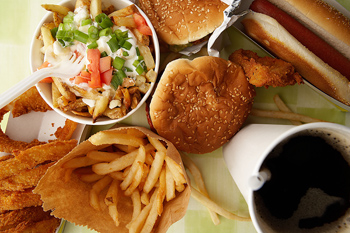How to Lower Cholesterol
Elevated cholesterol levels have been tied to a higher risk of heart disease and stroke. But learning how to lower cholesterol is easy. Making simple changes to your diet and to your activity levels can lower your cholesterol dramatically.
These diet and exercise changes will lower your cholesterol even if it’s dangerously high, though it’s possible that your doctor may prescribe cholesterol lowering medication to aid the effort if you are at especially high risk for heart disease or stroke.
1. Get regular, moderate exercise.
The key here is to include physical activity into your life on a regular basis. Set a goal to exercise five to seven days a week, even if it’s only for 20 minutes to a half hour per session. Some people do well with a routine, such as going to the gym, or jumping on the exercise bike, while others need to think outside the box. As long as you’re up and moving on a regular basis, then you’re getting exercise, and that’s one key to lowering your cholesterol. Taking a walk with your dog, taking a walk at the local flea market, playing tag or kickball with the kids, mowing the lawn, moving around in the garden, taking a ballroom dancing or martial arts class, scrubbing down the kitchen, or any one of a few dozen other physical activities will get your blood circulating and lower your cholesterol levels.
To get in the physical activity habit, make a checkmark on your calendar every day you’ve added a physical activity to your day for at least twenty minutes. Strive to have at least five checkmarks on your calendar every week.
2. Eat more fiber, especially soluble fiber.

How to Lower Cholesterol
3. Eat fish at least three times a week.
Fish is high in omega-3 fatty acids. Salmon, albacore tuna, mackerel, lake trout, herring, and sardines are the fish species highest in Omega-3s. To a lower degree, flaxseed and canola oil also contain them. To retain the Omega-3 benefits in your fish, be sure to grill it or bake it.
4. Include Foods Rich in Vitamin B3 (Niacin) in your Diet
Vitamin B3, also known as niacin, helps lower cholesterol. Foods rich in essential fatty acids, like fish and nuts, also contain B3. Most whole grains, such as wheat bran, corn grits and oats, also contain B3. Peanuts are high in B3 as well, as are chicken and turkey.
5. Include sources of polyunsaturated fatty acids in your diet.
Walnuts, almonds, hazelnuts, peanuts, pine nuts, hazelnuts and pistachios are rich in polyunsaturated fats, which keep blood vessels elastic, and may reduce your risk of heart disease. Nuts are high in calories, so moderation is key.
6. Lower Your Saturated Fat Intake.
Choose olive oil instead of butter for cooking, ease up on the cheeses, and switch to fat free milk. Don’t think that switching to margarine is the answer, because margarine is just as bad as butter. Strictly limit your red meat intake, and choose chicken, fish, or turkey instead.
Avoid anything fried, including donuts and potato chips. Avoid anything that has the word “hydrogenated” associated with the word “oil” in the ingredients list.
7. If You Smoke Cigarettes, Quit Smoking.
When you quit smoking, your HDL cholesterol level improves relatively quickly. Within one year of quitting smoking, your risk of heart disease will be half what it was when you smoked. In 15 years your risk will be the same as someone who has never smoked.
Changing your lifestyle to include smart diet choices and regular moderate exercise are the keys to learning how to lower your cholesterol.
